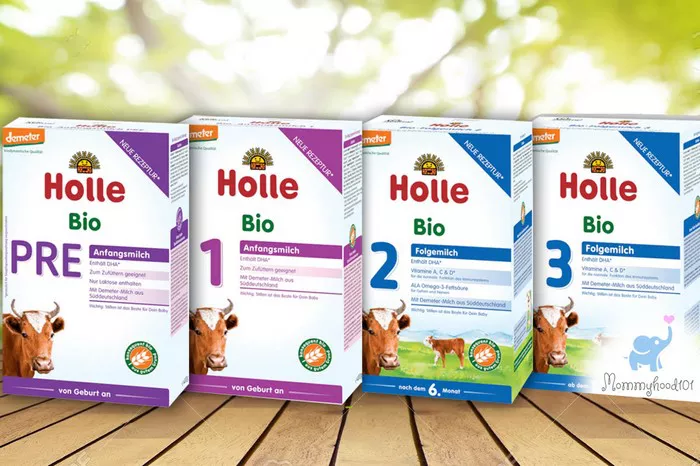As a parent, ensuring your baby receives proper nutrition is of utmost importance. Whether due to personal preference or necessity, combining breast milk with formula is a common practice among many parents. However, when it comes to mixing Holle formula with breast milk, several factors should be considered to ensure the health and well-being of your little one. In this comprehensive guide, we will explore the safety, benefits, and best practices of mixing Holle formula with breast milk.
Understanding Holle Formula
Before delving into the intricacies of mixing Holle formula with breast milk, it’s essential to understand what Holle formula is and its composition. Holle is a reputable brand that produces organic infant formula, known for its high-quality ingredients and commitment to providing babies with nutritious alternatives to breast milk. Holle formula is carefully formulated to mimic the nutritional composition of breast milk, offering a balanced blend of proteins, carbohydrates, fats, vitamins, and minerals necessary for infant growth and development.
Benefits of Breast Milk
Breast milk is often referred to as “liquid gold” due to its unparalleled nutritional value and numerous health benefits for babies. Breast milk contains antibodies that help strengthen the baby’s immune system, reducing the risk of infections and illnesses. It is easily digestible and specifically tailored to meet the nutritional needs of infants, promoting healthy growth and development. Breastfeeding also fosters a unique bond between mother and baby while providing emotional comfort and security.
Reasons for Mixing Holle Formula with Breast Milk
There are several reasons why parents may choose to mix Holle formula with breast milk:
1. Supplementing Breastfeeding: Some mothers may face challenges with breastfeeding, such as low milk supply or difficulty latching. In such cases, supplementing with formula can ensure that the baby receives adequate nutrition while still benefiting from the antibodies and nutrients present in breast milk.
2. Transitioning to Bottle Feeding: For mothers returning to work or school, transitioning from breastfeeding to bottle feeding may be necessary. Mixing breast milk with formula can help ease this transition for both the baby and the mother.
3. Increasing Caloric Intake: In certain cases, such as premature birth or low weight gain, pediatricians may recommend supplementing breast milk with formula to increase the baby’s caloric intake and promote healthy weight gain.
4. Convenience: Mixing breast milk with formula can offer convenience to parents, especially when traveling or in situations where breastfeeding may not be feasible.
Safety Considerations
While mixing Holle formula with breast milk is generally considered safe, there are some important safety considerations to keep in mind:
1. Proper Hygiene: Always wash your hands thoroughly before handling breast milk or formula. Ensure that all bottles, nipples, and feeding equipment are properly sterilized to prevent contamination.
2. Follow Mixing Instructions: When mixing Holle formula with breast milk, follow the manufacturer’s instructions carefully to ensure the correct ratio of formula to breast milk. Using too much or too little formula can affect the nutritional balance and may not provide adequate nutrition for your baby.
3. Storage Guidelines: Store breast milk and prepared formula properly to maintain their quality and safety. Breast milk should be stored in clean, airtight containers in the refrigerator or freezer, following recommended storage guidelines. Prepared formula should be used within the recommended time frame and discarded if left at room temperature for too long.
4. Consult with a Pediatrician: Before introducing formula or making any changes to your baby’s feeding routine, consult with your pediatrician or healthcare provider. They can offer personalized advice based on your baby’s individual needs and circumstances.
Mixing Holle Formula with Breast Milk: Step-by-Step Guide
Now that we’ve covered the basics, let’s walk through the process of mixing Holle formula with breast milk:
1. Gather Supplies: You will need clean bottles, nipples, measuring spoons, breast milk, and Holle formula.
2. Wash Hands: Wash your hands thoroughly with soap and water before handling any feeding equipment or breast milk.
3. Sterilize Equipment: Sterilize bottles, nipples, and other feeding equipment according to manufacturer guidelines.
4. Measure Ingredients: Measure the desired amount of breast milk and Holle formula according to the recommended ratio provided by your pediatrician or the formula manufacturer.
5. Mix Thoroughly: Pour the measured breast milk into a clean bottle, then add the appropriate amount of Holle formula powder. Secure the bottle cap and shake gently but thoroughly to mix the contents evenly.
6. Check Temperature: Test the temperature of the mixed formula by placing a few drops on the inside of your wrist. It should feel lukewarm, not hot.
7. Feed Baby: Feed the mixed formula to your baby using a clean nipple. Hold the baby in a comfortable position and ensure they are latching properly to prevent air intake.
8. Discard Unused Formula: If there is any leftover formula after feeding, discard it according to recommended guidelines to avoid bacterial growth.
9. Clean Up: Wash bottles, nipples, and other feeding equipment with hot, soapy water after each use. Allow them to air dry or sterilize them for future use.
Conclusion
Mixing Holle formula with breast milk can be a practical solution for parents looking to provide their babies with the best possible nutrition. By following proper hygiene practices, consulting with healthcare professionals, and adhering to mixing instructions, you can safely incorporate formula into your baby’s feeding routine while still benefiting from the nutritional advantages of breast milk. Remember that every baby is unique, so it’s essential to monitor your baby’s growth and development and make adjustments to their feeding routine as needed. With careful planning and attention to detail, you can ensure that your baby receives the nourishment they need to thrive.


